|
Additional Lessons |
 About These
Lessons About These
Lessons
The following classroom lessons are great for students
who want additional listening and reading practice. |
-
Travel America -
Beginner
Level. Do you love America and American
English? Learn before you travel. Facts and other
cool stuff about your favorite U.S. state. Great
English reading practice.
|
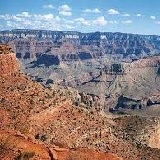 Travel
America - South Carolina Travel
America - South Carolina
(Beginner -
Reading)
Learn some interesting facts and read interesting
stories about South Carolina. |
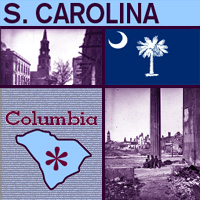 South
Carolina South
Carolina
Settled by the English in 1670, South Carolina was
based on a plantation culture with an aristocratic,
wealthy society that was dependent on black slave
labor. One of the original 13 colonies, South
Carolina was first formed in 1729 when the Carolina
colony was divided in two to form North and South
Carolina. The attack on Fort Sumter in the
Charleston harbor launched the Civil War. After the
war, the structure of the state changed. Today South
Carolina honors its history and culture while also
working to become a global business center. It is
fitting that the state tree of the "Palmetto State"
is the cabbage palmetto, which also appears on the
state flag. The flower is the yellow jessamine, and
the capital is Columbia. |
South Carolina
State Flag
The state flag of South Carolina was adopted on
January 28, 1861. The crescent symbol represents the silver
emblem worn on the caps of South Carolina troops during the
revolutionary war, and the background color matches the blue
of their uniforms. Crescents were also a component of a
banner carried by South Carolina protesters of the Stamp Act
in 1776.
The flag also features the state tree (sabal palmetto).
South Carolina's nickname is the palmetto state, a sabal
palmetto tree appears on the state seal, and also on the
U.S. Mint's quarter for South Carolina. The iconic sabal
palm is also the state tree of Florida.
Pledge to the South Carolina State
Flag (adopted in 1966):
I salute the flag of South Carolina
and pledge to the Palmetto State
love, loyalty, and faith |
|
Source:
State Symbols USA |
|
|
 South Carolina
State Facts South Carolina
State Facts
Picture: state seal of South Carolina |
|
State Capital |
Columbia |
|
Nickname |
Palmetto State |
|
Motto |
Animis Opibusque Parati (Prepared in Soul and
Resources) Dum Spiro Spero (While I breathe, I hope) |
|
Statehood |
May 23, 1788 (8th) |
|
Origin of Name |
Taken from"Carolus," the Latin word for Charles and
named after England's King Charles I |
|
Largest Cities |
Columbia, Charleston, North Charleston, Greenville,
Spartanburg |
|
Border States |
Georgia, North Carolina |
|
Area |
30,111 sq. mi., 40th largest |
|
State Bird |
Great Carolina Wren |
|
State Flower |
Yellow Jessamine (gelsemium sempervirens) |
|
State Tree |
Cabbage Palmetto (sabal palmetto) |
|
State Song |
Carolina |
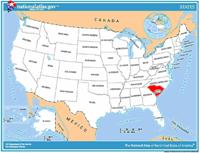 Travel and
tourism site for South Carolina - This state travel and
territorial tourism site provides ideas for your vacations,
meetings, and more. Travel and
tourism site for South Carolina - This state travel and
territorial tourism site provides ideas for your vacations,
meetings, and more. |
|
|
South Carolina Stories |
|
|
Cowpens Battlefield Fourth of July Event
Some historians say that the battle at Cowpens, near Chesnee, South
Carolina, was the single most brilliantly planned and fought battle
of the Revolutionary War. This was thanks to a clever strategy on
behalf of an American general. Do you know what happened?
During the battle, on January 17, 1781, Brigadier General Daniel
Morgan did two things -- he predicted how the British would react
and he took advantage of mistakes that the British troops made. At
one point, he ordered his men to retreat, and the British, thinking
they had won the battle, charged forward. Then, the Americans
surrounded the British and defeated them. The victory at Cowpens
inspired Americans to continue the war to victory at Yorktown,
Virginia.
On the Fourth of July, the National Park Service celebrates at
Cowpens National Battlefield with people in period costumes and
demonstrations of life and battle during the Revolutionary War. It
all ends with a great display of fireworks. |
|
|
Chitlin' Strut
Do you have the "guts" to attend the Chitlin' Strut held every year
in Salley, South Carolina? The main focus of this festival is the
preparation and consumption of large amounts of chitterlings ("chitlin's")
-- otherwise known as boiled hog intestines. The festival began in
1966 because the mayor was looking for a way to raise money for new
Christmas decorations for the town of Salley.
Chitlin's are considered a delicacy (a special and desirable food)
in South Carolina and other parts of the South. But chitlin's must
be prepared carefully. They must be soaked and rinsed thoroughly in
several changes of cool water, and repeatedly picked clean, by hand,
of extra fat and specks. They are then boiled and simmered until
tender. They can be prepared different ways. Standard recipes call
for simmering the chitlin's for three to five hours in water
seasoned with salt, black pepper, and perhaps hot peppers, along
with vinegar and an onion. But everyone has a different recipe.
Sometimes they are cooked with hog maws (hog stomach), or fried in a
batter.
The festival's popularity has grown steadily from 1,000 people when
it started to an average crowd of 40,000 to 60,000 people today, who
eat more than 10,000 pounds of chitlin's! |
|
|
Dock Street Theater
The Dock Street Theater in downtown Charleston, South Carolina, may
be the single most photographed spot in the city. It is also one of
the most important in America. Why? It was the first building in
America designed solely for theatrical performances.
But the theater is not the same one that opened in 1736. In 1740,
the building was destroyed by fire. When another building was
constructed on the site in 1809, it opened as the Planter's Hotel.
When the hotel was remodeled in the 1930s, a stage and auditorium in
the style of the 18th century were constructed, and the building
reopened in 1937 as the Dock Street Theater.
The building now serves its original purpose, and the city of
Charleston has retained an important part of its history. |
|
|
The Hallelujah Singers
How much do you know about the Gullah language and culture?
The Gullah language is a blend of West African and European
dialects. It is a language spoken by the descendants of slaves on
the barrier islands of South Carolina and Georgia. Most of the
Gullah vocabulary is of English origin, but grammar and
pronunciation come from a number of West African languages, such as
Ewe, Mandinka, Igbo, Twi and Yoruba. Some of the African words in
Gullah have become English words, such as cooter ("tortoise"),
goober ("peanut"), gumbo ("okra"), and juke (as in "jukebox").
The slaves grew rice on the islands. The plantations were overseen
by a foreman and rarely visited by people from the mainland. Because
these plantations were isolated, they were much less influenced by
Euro-American culture, and they retained much of their African
culture.
A great way to learn about the Gullah culture is to listen to the
Hallelujah Singers, a vocal group from Beaufort, South Carolina,
that seeks to preserve the Gullah language and heritage through
music. The singers perform traditional plantation songs dating back
to the 1600s. Their style combines singing and storytelling to tell
the unique history of the Gullah culture and the influence it has on
today's culture.
Founded in 1990, the Hallelujah Singers have performed in concerts
worldwide and on TV. If you saw the movie "Forrest Gump," then you
saw and heard the Hallelujah Singers. |
|
|
Yap Ye Iswa (Day of the Catawba)
The Catawba Indians used to inhabit the territory around the Catawba
River in North and South Carolina. In the 17th century the Catawba,
which means "people of the river," numbered about 5,000, but by the
end of the 20th century there were only about 1,200 descendants of
the Catawba, who lived around Rock Hill, South Carolina. The last
known speaker of the Catawba language, Red Thunder Cloud, a singer
and storyteller, died in January 1996.
The heritage of the Catawba is celebrated by the Catawba Cultural
Preservation Project, which holds a festival every year on the
Saturday after Thanksgiving -- Yap Ye Iswa (Day of the Catawba). The
festival is a way for the Catawba to celebrate their culture and
share it with people of all backgrounds.
The festival begins with a calling song performed by the River
Spirit drum group with the Grand Entry of tribal veterans, dancers
and drummers. After the Grand Entry, various tribal drum groups play
while tribal dancers perform traditional Catawba dances. A puppet
show based on Catawba folklore and in the Catawba language is
presented, as well as video presentations on the Catawba culture. |
|
|
Newberry Opera House
What can you do with a building that used to contain, among other
things, jail cells and a fire station?
In 1882, the newly built Newberry Opera House housed, on the first
floor, two stores, a fire station, a city council chamber, a clerk's
office, and a police station. The second floor held a performance
hall and stage. Touring companies of New York plays, minstrel and
variety shows, famed vocalists and lecturers, magicians, novelty
acts and boxing exhibitions appeared on its stage. Meetings, dances,
college commencement exercises, and musicals were also held there.
In the early 1900s it became especially popular because silent
"moving pictures" were shown there. Slowly moving pictures replaced
stage shows and in the 1920s the floor was remodeled as a movie
theater. The building functioned as a movie theater until 1952.
After the movie theater closed in 1952, some people thought the
building should be torn down, while others believed it was an
important historical building. Eventually the supporters won and in
1970 the Opera House was placed on the National Register of Historic
Places. In the 1990s the city government gave up its space on the
first floor, making it possible for the entire building to be
renovated and returned to its original use as an opera house and
community arts center.
The theater now has 427 theater seats that are historic
reproductions, a stage, and a horseshoe-shaped balcony. Since its
reopening, performances at the Newberry Opera House have included
operas, musicals, jazz concerts, vocal and other performances. |
|
Source:
Library of Congress |
|
 National
Forests, Parks, and Monuments of South
Carolina National
Forests, Parks, and Monuments of South
Carolina
The following is a description of national
forests, parks, and monuments in the state
of South Carolina. If you plan to visit or
live in South Carolina for awhile then you
should definitely plan to visit some of
these fantastic places. |
|
|
|
National Forests |
 Francis
Marion Francis
Marion
Francis Marion National Forest is home to
150 mi (240 km) of streams and a variety of
wildlife, including the endangered
red-cockaded woodpecker. There are four
wilderness areas in the forest, and it is
managed together with Sumter National
Forest. |
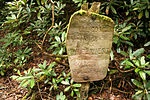 Sumter Sumter
Sumter National Forest contains 22
waterfalls with drops ranging from 12 ft
(3.7 m) to 150 ft (46 m) and part of the
Ellicott Rock Wilderness, the only
wilderness located in three states. |
|
|
|
National Parks |
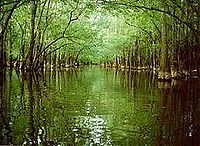 Congaree Congaree
On the Congaree River, this park is the
largest portion of old-growth floodplain
forest left in North America. Some of the
trees are the tallest in the eastern United
States. An elevated walkway called the
Boardwalk Loop guides visitors through the
swamp. |
|
|
|
National Monuments |
 Fort
Sumter Fort
Sumter
Fort Sumter is a Third System masonry
coastal fortification located in Charleston
harbor, South Carolina. It is best known as
the site where the shots initiating the
American Civil War were fired, at the Battle
of Fort Sumter. Nearby Fort Moultrie is a
unit of this monument; it was made of
palmetto logs and inspired the flag and
nickname (Palmetto State) of South Carolina. |
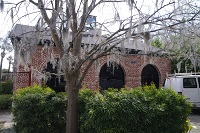 Reconstruction
Era Reconstruction
Era
Preserves four locations in and near
Beaufort, South Carolina—a school, church,
firehouse, and the Camp Saxton Site—to
commemorate activities during the
Reconstruction era that followed the
American Civil War. |
|
|
|
 Travel
America Travel
America
Do you love America and American English? Learn before
you travel. Facts and other cool stuff about your
favorite U.S. state. Visit the Fun Easy English Travel
America pages. Read about the beautiful National
Forests, Parks, and Monuments. Great English reading practice. |
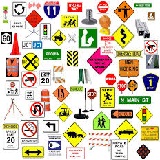 Drive America Drive America
Planning to drive in America? Learn the rules and
regulations. Great English reading practice. |
|